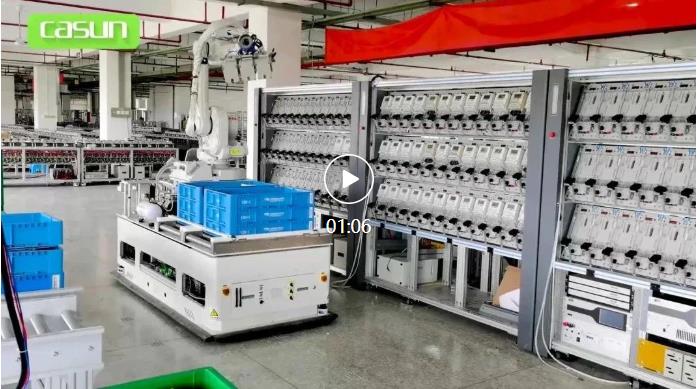Warehousing planning includes the selection of warehouse location, the overall layout of the warehouse, the layout of the storage space in the warehouse, and the planning of operation procedures. It is an important module in logistics planning. It plays a fundamental role in determining the level of operational efficiency, whether it can achieve both convenience and data accuracy, the quality of cargo storage, and what functions can be achieved in the future.
Contents
1 Project start-up preparation
In the actual operation process, some people often skip the second step, or do the third step and then do the second step, so they often break away from the status quo, have nothing to do with the status quo, and cause the calculated data to be very easy to design later Processing, put some equipment, each equipment, for example, use RF to pick up, everyone can pick as much as possible per hour, but is it suitable for you? It can be said that it is suitable for you, but it is also suitable for any enterprise. Exactly the same.
2 Data processing and analysis
The data here includes information about the warehouse building itself and specific information about shelves, goods, etc., in detail including the following aspects: information related to the warehouse itself: the clear height of the warehouse, the size of the warehouse area, the number of supporting pillars, The width of a span, the distance between two spans, etc.; the tools used in the operation: whether to use a pallet, the size of the pallet, whether to use a forklift or a clamping machine, the length, width, and turning radius of the machine, etc.; use a plane Warehouse, shelf warehouse, or three-dimensional warehouse; the size of vehicles entering and exiting the warehouse, the number of entering and exiting warehouse doors, the number of platforms, etc.; the classification of goods, the packaging size of each category, the number of stacking layers, whether it is strictly first-in-first-out, whether to disassemble Delivery, etc.
Process and analyze the data collected above, and format the result data in an intuitive way. Its purpose is to be able to better communicate with superiors and related departments. Other departments are not cold at all about how many forklifts and how many goods are in your specific warehouse. If you can express it in a chart, it will be more conducive to your communication with them. , To better realize your vision.
3 Discuss the goals of future strategies
For example, your production scale, originally from 2 billion to 100 billion, what trend is this changing? For example, it turns out that the average production is so much, but maybe in the future, when the peak value is suddenly pulled very high at a certain time, this phenomenon will appear, but often the future is the most unpredictable. There is no such idea, including others. At that time, the inventory turnover days may be 80 days now, maybe 20 days in the future, and so on. But how to reach 20 days, how to change, and to change in that direction. This piece is worth considering.
Of course, this step should be as detailed as possible, including the changes between SKUs, which products will sell well in the future, and which products will continue in the future. Originally, there may be one bottle for one hundred, but one bottle in the future. This sample looks like Changes. My experience with these changes is that people at the top don’t know, and people at the bottom don’t know. They don’t have any ideas about this, so I think at present, I think it is more troublesome. I haven’t seen anyone discussing these things specifically, they often only know what it is like now. Maybe many people still don’t know what it is like now.
4 System Requirements Analysis
What kind of trend is the change of each day, this piece is basically analyzed with the status quo and will be adjusted according to the future. Its approach is often after I get a model of the status quo, for the future, through the current situation, it may be superimposed in the future. Now it is 2 billion to get a model, the daily shipment volume, how much capacity each area has, how much volume must be processed, and then to 10 billion, to get the future, this situation often occurs, and this is it.
Warehousing business as a whole, each of its steps constitutes a part of the overall system, reasonable integration, and optimization of these elements to achieve the final ideal state. For example, the optimization of inventory is inseparable from factors such as reasonable location planning, the timely rate of order delivery, the effective use of space, and the reasonable layout of channels.
5 Planning and Design
After obtaining a piece of data, how to manipulate the data depends on the planner’s ability. At this step, everyone’s ideas will be very, very different. When meeting your needs in the future, it may be very automated, for example.
Then design what kind of trend, or how to operate through this other mode, etc., can you achieve a better one that can meet the efficiency and meet the needs under this limited automation? For the solution, this is a question of the designer. Basically, the problems may lie in these two places.
6 Evaluation options
7 Fine step design
The enterprise should organize manpower to count and identify the materials in the warehouse, sort out the materials that have expired, expired, deteriorated, or the products have been withdrawn from the market and cannot be borrowed, and cleared out of the warehouse. In addition, hazardous materials such as gasoline and paint should also be removed from the warehouse, and the installation safety management requirements should be managed separately.
1. Categorize items
Establish classification standards and rules. According to the properties of the material, such as the physical and chemical properties of the material (high-temperature resistance, not high-temperature resistance), material (metal, plastic, rubber, etc.), source (Beijing, Tianjin, Shanghai, etc.), region (East China, North China, South China, Southwest, Northwest) Establish classification standards and rules for material status (raw materials, external parts, work in progress, finished products, etc.).
2. Implement classification according to standards
Register the items left in the warehouse, and select one or several of the above classification standards to classify the items.
3. Warehouse area division
The role of warehouse area division-the division of warehouse area is mainly to determine the function of the area, the area size of the area, the spatial height of the area, the location of the area, the number/distribution/width of aisles, etc.;
Warehouse area division rules-area division should follow the principles of avoiding repeated investment and construction, logistics in the same direction, placing different items in different areas, convenient for storage and storage, maximum use of space, convenient operations for logistics personnel, and first in first out;
Warehouse area planning and design-calculate the required area and space of various types of materials according to the size of the material and the amount of safety stock, and then draw the area planning plan according to a certain ratio, showing the storage location and occupied area of each material.
4. Material storage location design
Determine the specific items and where they should be placed (the shelf and floor), and manage the fixed, quantitative, and volumetric materials. In general, place heavy and bulky materials on lower shelves, and place those with a high frequency of use closer to the outlet.
5. Review of warehouse area planning
After the warehouse planning is completed, relevant personnel in distribution, warehouse management, picking, management, etc. need to be called to review the planning and review its rationality from the standpoint of their respective positions. Then modify the plan based on the review comments until the review is passed. After that, the materials are placed according to the regional planning scheme.
6. Visual management design
Design area mark, design location mark.
Plane layout mark, logistics route mark.

